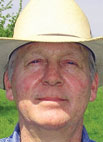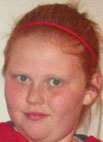
Checkerhill Angus in West Plains, Mo., operates with a dual focus when it comes to raising cattle.
“We have a production herd, raising females and bulls for seedstock producers, as well as our specialized show ring production side,” explained Kelly Smith, owner and operator. “Ultimately our goal is to produce quality Angus cattle, but production and show ring cattle are a little different and we’re aware of that in the way we breed and raise our cattle,” he added.
Kelly grew up raising Angus cattle in northeast Arkansas, so when his family settled in Howell County, Mo., in 1999, it made sense that he got back into the Angus breed.
“We built the house here at the farm in 2000,” he recalled. “Dad gave the boys an Angus heifer when we moved here and that’s where we started.”
Kelly worked in agriculture but moved around a lot before they settled here, so he didn’t start raising cattle again until 2000.
“Sixteen years ago, the boys were still young and it was perfect time to get back into the cattle business,” said Kelly.
They currently have about 50 cows on the approximate 260 acres of owned and leased land in Howell County, Mo. “We just run the cattle, buying hay so we have more options for hay and don’t have the expenses of equipment and upkeep,” he explained.
Checkerhill Angus is a family operation and the boys are still very much involved in the decisions of the farm. “They are just not here for the day-to-day working,” smiled Kelly. Cody, 26, lives in Springfield, Mo., and Clayton, 23, lives in West Plains, Mo.
“They both grew up on the farm and have a great network in the breed and the industry in general,” Kelly added. “And of course with social media, they have connections all across the country, helping when it comes to marketing our cattle.”
BREEDING
“We are 100 percent A.I. on the farm,” explained Kelly. “We’ve always used A.I. as a way to keep our cattle on the cutting edge and use the best quality genetics to continue to improve our herd.
“Each year at the beginning of breeding season, which starts after Thanksgiving, we print all our registration info on our females with EPDS and begin to review and make notes.
“We keep track of what bulls we’ve used in the past and what traits we feel would match the females to create better offspring. For example, if the cow needs more frame, or already throws large calves, we hand pick our bulls to match each female,” he explained. “The boys and I do this process and then we meet with my brother, who does all our AI work and he reviews our selections and gives us his thoughts too. We will have two AI bull options for each cow that is breeding age when we get ready to start the process,” he added.
“We might be breeding 40 cows and using 25 to 30 different bulls, where some breeders chose a bull or two for the year and breed all their females to those bulls. We have more variety to highlight in our programs by using the bulls with the specific traits needed for those females,” he said.
EMBRYO TECHNOLOGY
“One thing we are big on is cow families,” Kelly said. “We find females that work well in our production and show ring program, and work to maximize those females by not only using A.I., but we’ve started embryo transfer work with them also.
“When we have cows that are producing quality animals that people want, it makes sense to work with them to maximize offspring. That’s why we have begun working to flush some of our females and working with other producers to help us raise our embryo calves. “If you can get a litter from a quality female each year through embryo work, you come out ahead, instead of just one quality calf a year. Plus the market for selling embryos is increasing, so that is always another marketing option.”
MARKETING
Checkerhill Angus markets animals in traditional ways through state and local breed sales, as well as private treaty sales at the farm. “Last October we held our first ever sale online and it was very successful,” said Kelly.
According to Kelly, the opportunities in embryo transfer work are going to continue to help Checkerhill Angus grow. “When you can flush a top-quality female and get more than 15 grade one embryos, you have the ability to go far. And with the work they are doing regarding sexed embryos and in vitro fertilization, using one straw of semen to fertilize multiple eggs from a flush, the sky seems to be the limit,” he added.
FUTURE GOALS
“Of course you always want your show calves to go out there and win big shows. We’re not really competing in the shows anymore ourselves, but the more cattle we sell for the show ring, the more opportunity we have for our genetics to make it to the backdrop with a championship banner. That’s always going to be a goal and when it happens it’s a proud moment,” he explained.
“We plan to continue to raise quality cattle in our production and show ring programs and hope that we can continue to help get kids involved through the show ring to become interested in livestock and agriculture,” Kelly concluded.







